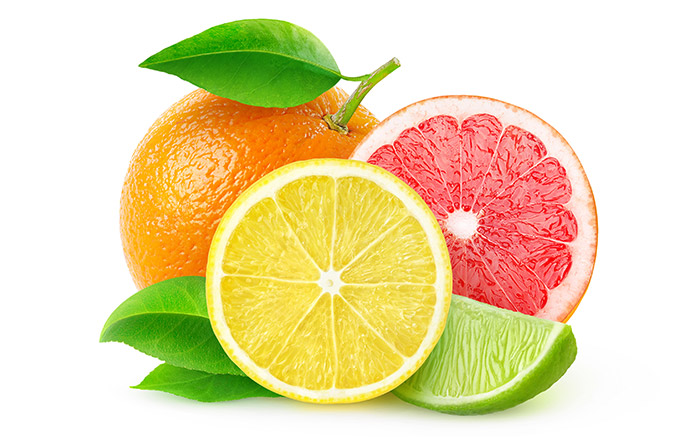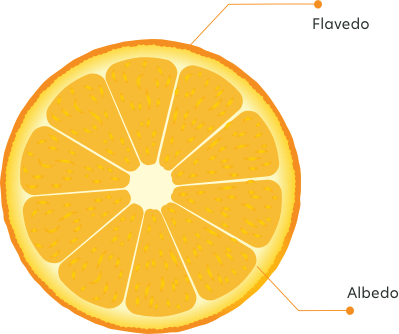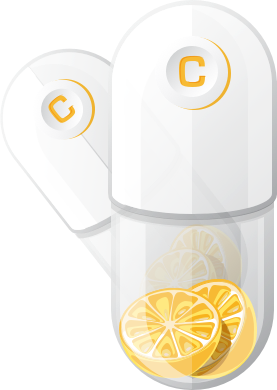Цитрусова магия
Цитрусовите плодове са продукт от дървета и храсти от семейството на растенията Rutaceae, включително портокал, лимон, лайм, грейпфрут, мандарина и помело.
Те са добри източници на хранителни вещества, по-специално на витамин С. В допълнение към витамин С, който е най-обилното хранително вещество, тези плодове са източник на витамини от група В (тиамин, пиридоксин, ниацин, рибофлавин, пантотенова киселина и фолати). Освен това цитрусовите плодове съдържат в изобилие макронутриенти - захари, диетични фибри, калий, фолат, калций, фосфор, магнезий, мед, рибофлавин и пантотенова киселина.


Цитрусовите плодове съдържат редица вторични метаболити като флавоноиди, алкалоиди, кумарини, лимоноиди, каротеноиди, фенолни киселини и етерични масла. Тези биохимикали играят жизненоважна роля за човешкото здраве и имат важно действие в човешкото тяло, включително антиоксидантно, противовъзпалително, противораково, както и сърдечно-съдов защитен ефект. Проучвания за биоактивност на флавоноидите са широко провеждани през последните 50 години.
Цитрусовите плодове са били използвани в традиционната и съвременна медицина и хранене като източник на много важни биохимични вещества, подпомагащи здравето на човека, по-специално сърдечно-съдовото здраве, със своето силно антиоксидантно действие, съдов защитен ефект и ефект на подобряване на съдовата функция.

1. Katherine A. Lyseng-Williamson and Caroline M. Perry Micronised Purified Flavonoid Fraction. A Review of its Use in Chronic Venous Insufficiency, Venous Ulcers and Haemorrhoids. Drugs 2003; 63 (1): 71-100
2. Diosmin Monograph. Alternative Medicine Review 2004, Volume 9, Number 3
3. Hesperidin. Natural Medicines Database. Professional Monograph. 2/13/2019
4. The British Journal of Surgery: Meta-Analysis of Flavonoids for the Treatment of Haemorrhoids
5. Ramelet AA. Clinical benefits of Daflon 500mg in the most severe stages of chronic venous insufficiency. Angiology 2001;52:S49-S56.
6. Smith PD. Neutrophil activation and mediators of inflammation in chronic venous insufficiency. J Vasc Res 1999;36:24-36.
7. Bergan JJ, Schmid-Schonbein GW, Takase S. Therapeutic approach to chronic venous insufficiency and its complications: place of Daflon 500 mg. Angiology 2001;52:S43-S47.
8. Le Devehat C, Khodabandehlou T, Vimeux M, Kempf C. Evaluation of haemorheological and microcirculatory disturbances in chronic venous insufficiency: activity of Daflon 500mg. Int J Microcirc Clin Exp 1997;17:27-33.
9. Yoichi Nogata et al. Flavonoid Composition of Fruit Tissues of Citrus Species. Bioscience, Biotechnology, and Biochemistry Vol. 70 (2006) , No. 1 pp.178-192
10. Amílcar Duarte et al. Citrus as a Component of the Mediterranean Diet. Journal of Spatial and Organizational Dynamics, Vol. IV, Issue 4, (2016) 289-304
11. Jung-Kook Song and Jong-Myon Bae. Citrus Fruit Intake and Breast Cancer Risk: A Quantitative Systematic Review. J Breast Cancer. 2013 Mar; 16(1): 72–76.
12. Carlos A. González, Núria Sala, Theodore Rokkas. Gastric Cancer: Epidemiologic Aspects. Helicobacter ISSN 1523-5378doi: 10.1111/hel.12082
13. Grapefruit and Medication. Total Health. 27 (2): 39. 2005.
14. Carr, Jackie. Five Ways to Prevent Kidney Stones. UC San Diego. April 22, 2010
15. A. Lichota et al. Therapeutic potential of natural compounds in inflammation and chronic venous insufficiency. European Journal of Medicinal Chemistry 176 (2019) 68-91
16. Bogucka – Kocka et al. Diosmin – Isolation Techniques, Determination in Plant Material and Pharmaceutical Formulations, and Clinical Use. Natural Product Communications Vol. 8 (4) 2013
17. Berne, Robert M, Bruce M. Koeppen, and Bruce A. Stanton. Berne & Levy physiology, Seventh Edition. Philadelphia, PA: Mosby/Elsevier, 2018
18. Hall, John E, and Arthur C. Guyton. Guyton and Hall Textbook of Medical Physiology, 13th edition. Philadelphia, PA: Elsevier, 2016
19. Overview of the Venous System. MSD Manual Consumer Version. Retrieved June 11th, 2016 (https://www.msdmanuals.com/home/heart-and-blood-vessel-disorders/venous-disorders/overview-of-the-venous-system)
20. Huether, Sue E.McCance, Kathryn L., eds. Understanding Pathophysiology. 6th edition. St. Louis, Mo.: Elsevier/Mosby, 2016
21. Heart and Blood Vessels Disorders. MSD Manual Consumer Version. Retrieved June 11th, 2016 (https://www.msdmanuals.com/home/heart-and-blood-vessel-disorders/venous-disorders/overview-of-the-venous-system)
22. Economos C, Clay WD. Nutritional and health benefits of citrus fruits. Food Nutr Agric. 1999;24:11–18
23. Morand C., Dubray C., Milenkovic D., et al. Hesperidin contributes to the vascular protective effects of orange juice: a randomized crossover study in healthy volunteers. American Journal of Clinical Nutrition. 2011;93(1):73–80. doi: 10.3945/ajcn.110.004945
24. Zou Z., Xi W., Hu Y., Nie C., Zhou Z. Antioxidant activity of Citrus fruits. Food Chem. 2016;196:885–896. doi: 10.1016/j.foodchem.2015.09.072
25. Testai L., Calderone V. Nutraceutical value of citrus flavanones and their implications in cardiovascular disease. Nutrients. 2017;9:502. doi: 10.3390/nu9050502